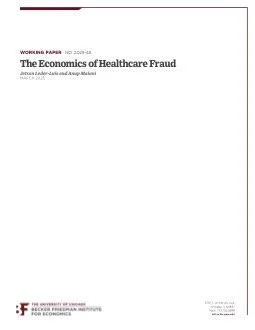By Program on Extremism staff, including Lorenzo Vidino, Lara Burns, Sergio Altuna, Rosa Cabus, Cynthia Martinez and Jake Gilstrap.
The Islamic Republic of Iran and its network of proxies (often identified as Axis of Resistance) have a long history of activities targeting the United States, as opposing America constitutes one of their foundational dogmas. Said activities range from influence operations and propaganda to terrorist and military attacks. Tensions between the two sides have substantially escalated in the wake of the October 7, 2023 attacks in Israel and the conflict that followed making an assessment of these activities and their possible future developments highly relevant. While most of the anti-American activities by Iran and its proxies have been carried out in the greater Middle East, some of them have taken place inside America. Iran and its proxies have, in fact, been operating inside the United States for decades, engaging in a broad array of nefarious activities that can be divided into three main categories: lethal operations, procurement and propaganda.
Lethal operations:
Iran has a history of carrying out assassinations inside America that dates back to 1980, when it commissioned the assassination of an Iranian dissident in Bethesda, MD.
While in recent years dissidents have been targeted with increasing frequency, Iran has also escalated its target selection by including US-based foreign diplomats and, even more brazenly, high ranking US officials.
Most of these plots appear to have been outsourced to hired guns, a choice largely dictated by necessity, but that also offers the Iranian regime the advantage of plausible deniability. The proxies so far used by Tehran to carry out assassinations inside the US have tended to be elements who were not ideologically aligned (mostly from the criminal underworld) and who displayed relatively low levels of professionalism.
Procurement: Iranian-linked networks have also been active on American soil for decades to procure sensitive goods (high- tech equipment, dual-use tech, software, etc.), and conduct financial activities in violation of US sanctions. Schemes used have at times been very elaborate, amounting to hundreds of millions of dollars.
Propaganda: America is home to a broad web of entities (mosques, Islamic centers, schools, student groups) and individuals with close personal, financial, organizational, and ideological links to the Iranian regime and its proxies. They spread Iran’s religious and political worldview, glorifying the regime and its allies, undermining America and disseminating antisemitic views.
The New York-based Alavi Foundation is arguably the most prolific actor in the spread of Iranian regime influence in the United States. With its multimillion-dollar budget, it either directly owns or funds through grants, no-interest loans, and donations a broad array of mosques and entities nationwide that disseminate Tehran’s viewpoint. In 2008, the Department of Justice filed a civil forfeiture complaint against Alavi, arguing that it “secretly served as a front for the Iranian government and as a gateway for millions of dollars to be funneled to Iran in clear violation of U.S. sanctions laws.” In 2017, a jury found Alavi guilty, but the judgment was overturned by the appellate court due to procedural errors in the district court’s rulings. The legal battle is ongoing.
This report identified more than a dozen organizations that disseminate pro- Iranian regime and pro-Hezbollah viewpoints and operate schools and mosques nationwide that host radical preachers who weave anti-US and antisemitic sentiments throughout their teachings. Some of the most important ones are based in Houston, New York and Potomac, Maryland. Additionally, Dearborn, Michigan is a particularly important hub, as it hosts several prominent institutions disseminating Tehran’s worldview.
Many of the key individuals behind this web of entities maintain close connections to the Iranian regime, frequently traveling to Iran and actively participating in Iranian soft power organizations like Ahlul Bayt World Assembly and Al-Mustafa International University.
Many of the Iran-aligned institutions identified in the report host events like commemorations of the anniversary of the 1979 Iranian Revolution and the anniversary of the death of Iran’s first post-revolution Supreme Leader, Ayatollah Khomeini; ceremonies memorializing the lives of IRGC-Quds Force Commander Qassem Soleimani and Hezbollah spiritual leader Hussein Fadlallah; and Quds Day, a day of protest against Israel declared by Khomeini in 1979 and commemorated the last Friday of every Ramadan.
Particularly troubling is the presence in the suburbs of various American cities of Islamic schools—some of which receiving state funding—that teach the Iranian regime’s interpretation of Islam and political worldview to scores of American children.
US authorities have repeatedly highlighted that “Iran typically relies on individuals with preexisting access to the United States for surveillance and lethal plotting” and, similarly, that “the arrests of individuals in the United States allegedly linked to Hezbollah's main overseas terrorist arm and their intelligence collection and procurement efforts demonstrate Hezbollah's interest in long-term contingency planning activities here in our homeland.” In substance, the possibility that Iran and its proxies could mobilize known and trusted assets based in the US rather than hired guns to carry out some kind of violent action in the future is a concrete one. In light of these dynamics, procurement and propaganda networks should be seen as natural recruitment pools for Iranian security apparatuses and their proxies seeking to plan attacks. Hezbollah is the oldest and most established of Iran’s proxies. It has long operated in the US, and Program on Extremism research has identified 142 US- based individuals who have been prosecuted for Hezbollah-related activities since 2000. Most individuals provided financial assistance to the group as money launderers/ bundlers/fraudsters and goods smugglers. About 13% of the prosecutions related to individuals who provided operational support as human smugglers, weapons procurers, and surveillance operatives. Clusters of friends or family members, some of them based out of Michigan, New York, California and North Carolina, play a central role in Hezbollah’s activities in the United States, particularly in fundraising operations. Iran and its proxies are also active in Canada and many Latin American countries. Exactly as in the US, their activities in those countries range from the creation of extensive propaganda centers to networks engaged in procurement and other financial activities and, occasionally, terrorist attacks (most recently, Brazil thwarted an alleged Hezbollah attack against Jewish targets in 2023). Many Latin American countries constitute a highly permissive environment that allows Tehran and its proxies to operate almost undisturbed. This dynamic poses a security challenge, not just to those countries, but also to the United States, given their geographical proximity. Given the heightened geopolitical tensions that have followed the October 7, 2023 attacks and Iran’s unrelenting commitment to highly adversarial positions towards the United States, an in-depth understanding of its networks inside the US and throughout the Western Hemisphere is of paramount importance. This required awareness applies not just to actors who are directly engaged in violent actions, but also to procurement and propaganda networks, as they not only serve useful roles for Tehran in and of itself, but can also potentially be utilized to support or carry out attacks.
Washington, DC: Program on Extremism at George Washington University,2024. 126p.


















